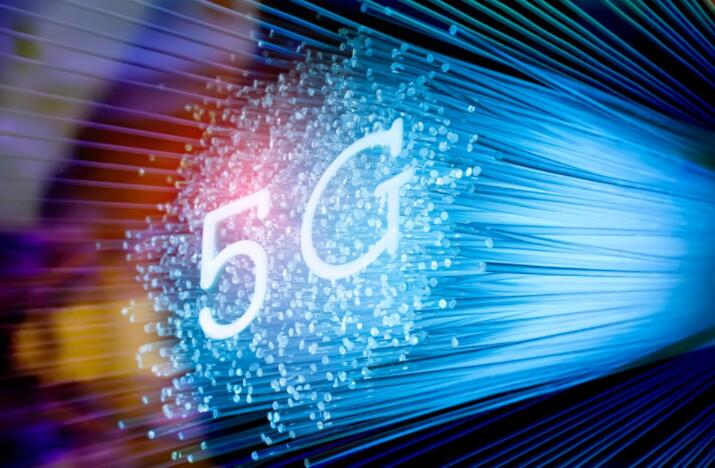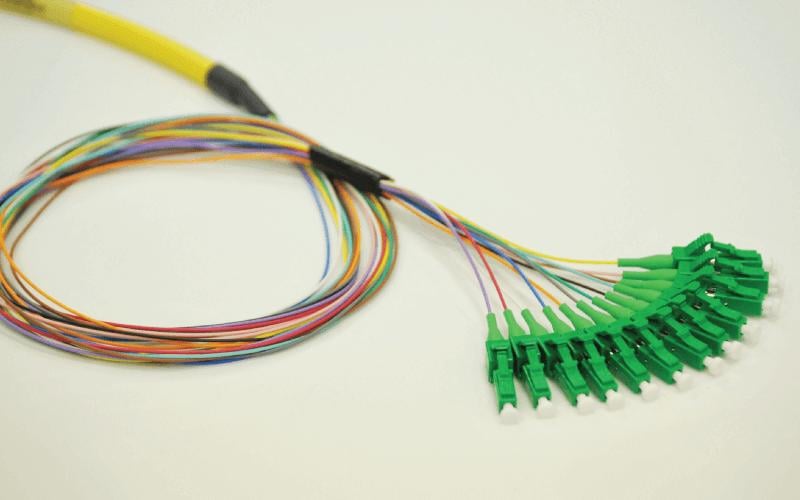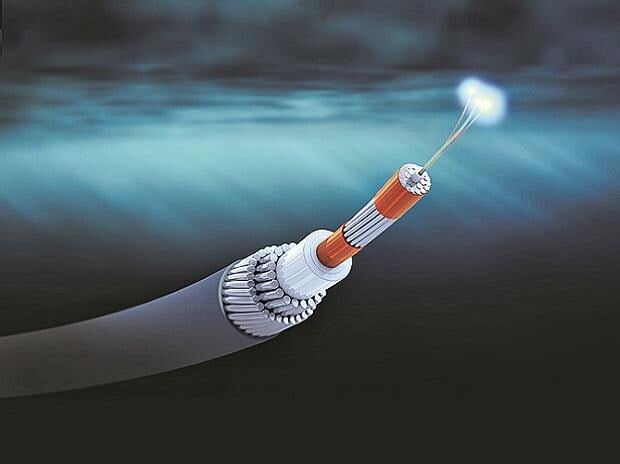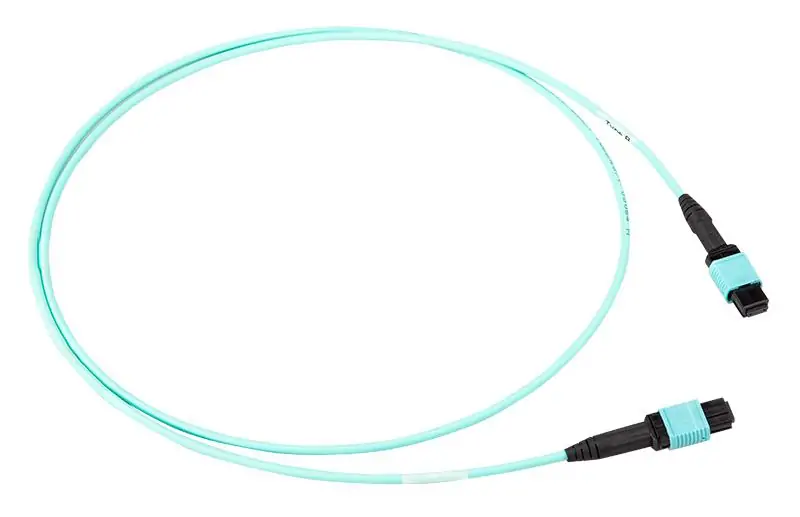As global communication technology continues to evolve, 5G networks are rapidly becoming the core infrastructure of the new era. Compared to its predecessor, 4G, 5G is not merely an increase in speed; it encompasses a broader range of applications, supporting emerging technologies such as the Internet of Things (IoT), big data analytics, and smart cities. In the construction of 5G networks, fiber trunk cable plays a crucial role.

Basics of Fiber Trunk Cable
Fiber trunk cable is a communication medium used for high-speed data transmission. It consists of hundreds of extremely thin glass or plastic fibers that transmit information through light signals. The core structure of fiber optic cables includes the fiber core, cladding, buffer layer, and outer jacket. The core and cladding have different refractive indices, allowing light signals to propagate through total internal reflection, ensuring low attenuation and efficient data transmission.
Importance of Fiber Trunk Cable in 5G Networks
High-Speed Data Transmission Requirements
One of the main features of 5G networks is their ability to support extremely high data transmission rates, which are crucial for real-time data processing and transmission. Applications such as IoT, big data, and autonomous driving require massive amounts of real-time data, demanding high bandwidth and low latency from the network. Fiber trunk cable has the characteristics of high bandwidth and low latency, making it capable of meeting these stringent requirements of 5G networks.
High Network Reliability
As the number of devices increases and data demands grow, network reliability and availability become paramount. 5G networks need to be highly reliable to support widespread device connectivity and real-time data processing. Fiber optic cables, with their resistance to electromagnetic interference, long transmission distances, and high data transmission rates, are an indispensable part of 5G networks.

Supporting High Frequencies and Small Cell Deployment
5G networks use higher radio frequencies to transmit large amounts of data, but these high-frequency signals have shorter propagation distances, requiring the deployment of numerous small cells. These cells are connected via fiber trunk cable, ensuring that high-frequency signals can be transmitted quickly and efficiently. This dense deployment of small cells also relies on fiber optic cables to achieve network coverage and stability.
Applications of Fiber Trunk Cable in 5G Networks
Network Densification in Urban and Suburban Areas
In urban and suburban areas, the deployment of 5G networks requires a large number of small cells and macro cell sites, connected via fiber optic cables to ensure efficient network operation. The high bandwidth and low latency characteristics of fiber optics make them an ideal choice for connecting these cells, effectively supporting the high data transmission demands of urban and suburban areas.
Network Coverage in Rural Areas
In rural areas, network coverage has always been a challenge due to geographical and economic factors. However, the high-efficiency transmission capabilities of fiber optic cables make them key to solving this problem. By deploying fiber trunk cable in rural areas, efficient data transmission can be achieved, supporting the construction of 5G networks and bridging the digital divide between urban and rural areas.
Network Construction Along Highways and Railways
5G network construction along highways and railways is crucial for intelligent transportation systems. These areas require stable, high-speed data transmission to support applications such as autonomous driving and vehicle-to-everything (V2X) communications. Fiber optic cables provide reliable, high-speed data transmission, ensuring network coverage and data transmission needs in these areas.

Technical Advantages of Fiber Trunk Cable
High Bandwidth and Low Latency
Fiber optic cables can support data transmission rates of up to 10 Gbps or higher, which is crucial for the massive data transmission in 5G networks. Their low latency characteristic allows for quick response to data requests, meeting the needs of real-time data transmission.
Resistance to Electromagnetic Interference
Unlike traditional copper cables, fiber optic cables are not affected by electromagnetic interference, ensuring the stability and reliability of data transmission. This characteristic is particularly important for the high-frequency signal transmission in 5G networks, effectively avoiding signal interference and ensuring data transmission quality.

Long Transmission Distance
Fiber optic cables can transmit data over long distances without the need for repeaters, giving them a significant advantage in wide-area network construction. The long transmission distance capability of fiber optic cables makes them essential in the construction of 5G networks in urban, suburban, and rural areas.
Challenges and Future Development of Fiber Trunk Cable in 5G Networks
Cost and Deployment Complexity
Although fiber optic cables have many advantages, their deployment cost is high, especially in areas with complex geographical environments. Reducing the deployment cost of fiber optic cables and simplifying the installation process are important issues that need to be addressed in the future.
Technological Innovation and Standardization
As 5G networks continue to evolve, fiber optic technology is also continuously innovating. Advances in new fiber materials, optical amplifiers, and fiber connectors will further enhance the performance and application range of fiber optic cables. At the same time, the standardization of fiber optic technology will promote its widespread application globally.
Deep Integration and Intelligent Applications
In the future, fiber optic cables will be deeply integrated with other communication technologies, forming a more intelligent network infrastructure. By combining with technologies such as artificial intelligence and the Internet of Things, fiber optic cables will better support applications in smart cities, intelligent transportation, and smart manufacturing, driving digital transformation in society.
Conclusion and Recommendation
In the development of 5G networks, fiber trunk cable plays an irreplaceable role. Its advantages of high bandwidth, low latency, resistance to electromagnetic interference, and long-distance transmission make it the ideal choice for supporting 5G networks. With continuous technological innovation and expanding applications, fiber optic cables will play an increasingly important role in future communication networks, driving the widespread adoption and development of 5G.
If you are looking for high-quality, high-performance fiber trunk cables, check out Fibemart's products! As one of the most successful suppliers of MTP trunk cables and MTP multi-fiber trunk cables, Fibemart produces MTP trunk cables and MPO trunk cables that can be terminated in any fiber mode, fiber count, and custom cable configuration, ranging from 12 fibers to 288 fibers. Whether it's 10Gb, 40Gb, or 100Gb configurations, Fibemart can provide you with the highest quality solutions. Contact our team anytime to learn more about our range of fiber trunk cables, make an informed decision, and order MTP fiber trunk cables to take your 5G network construction to the next level!
















No comments have been posted yet.